


A Symphony Of Flavors And Aromas
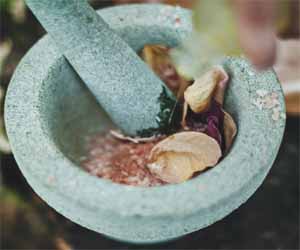
The beauty of herb gardens lies not only in the aromatic and flavorful treasures they offer but also in the diverse range of herbs that can be cultivated. These multifaceted gardens are a testament to the incredible variety of plants that can be grown for culinary, medicinal, and aesthetic purposes. In this article, we'll explore the world of herb garden diversity, celebrating the rich tapestry of flavors, aromas, and colors it can bring to your life.
The Many Faces Of Herb Diversity
Herb gardens are a treasure trove of plant diversity. They encompass a vast array of herbs, each with its unique characteristics and uses:
Culinary Herbs: These are the culinary classics like basil, oregano, rosemary, and thyme, which infuse dishes with diverse flavors, from sweet and fragrant to earthy and robust.
Medicinal Herbs: Herbs like chamomile, lavender, and echinacea have been used for centuries for their healing properties. They offer a diverse range of remedies, from soothing teas to natural salves.
Aromatic Herbs: Lavender, mint, and lemon balm are renowned for their captivating aromas. They are often used for creating aromatic oils, perfumes, and potpourri.
Ornamental Herbs: Herbs aren't just practical; they can also be aesthetically pleasing. Plants like coleus, ornamental sage, and variegated thyme add visual charm to your garden.
Ethnic Herbs: Each culture and cuisine has its own set of herbs that are integral to their dishes. Think of the diversity of herbs in Thai, Indian, or Mexican cuisine.
Flavor Diversity
The heart of herb diversity lies in the wide range of flavors they offer:
Sweet And Mild: Herbs like basil and cilantro impart a sweet and mild character to dishes, elevating the flavors of tomatoes, salads, and more.
Savory And Robust: Rosemary, thyme, and oregano bring robust, savory notes to roasted meats and hearty stews.
Tangy And Citrusy: Lemon balm and lemongrass add a bright, citrusy zing to beverages and desserts.
Peppery And Pungent: Herbs like chives and tarragon provide a peppery and slightly spicy punch to sauces and dressings.
Visual Diversity
Herb gardens are a feast for the eyes as well. The visual diversity of herbs adds an ornamental quality to your garden:
Colors: Herbs come in a variety of leaf colors, from the deep green of basil to the silver-gray of sage and the variegated patterns of oregano.
Shapes: Herb plants can vary in size and growth habit, from the cascading nature of thyme to the upright form of rosemary.
Flowers: Many herbs produce colorful and often edible flowers, such as the purple blooms of lavender or the white flowers of chamomile.
Gardening Benefits
The diverse nature of herb gardens extends beyond culinary and aesthetic pleasures:
Biodiversity: Herb gardens support biodiversity by attracting pollinators and beneficial insects, contributing to a healthy ecosystem.
Sustainability: Growing a diverse range of herbs can help reduce your environmental impact by decreasing the need for commercially grown herbs.
Learning Opportunity: Maintaining a diverse herb garden is an educational journey that teaches you about various plant species and their unique needs.
Herb garden diversity is a celebration of nature's bounty. It allows you to savor a world of flavors, aromas, and colors while enhancing your culinary adventures and garden aesthetics. The diversity of herbs extends far beyond what can be described in this article, and it's an invitation for you to explore, experiment, and enjoy the rich tapestry of herb life. Whether you're an experienced gardener or just starting, a diverse herb garden offers a sensory and educational journey that enriches your life in more ways than one.


Elevating Ambiance And Well-Being In Your Space
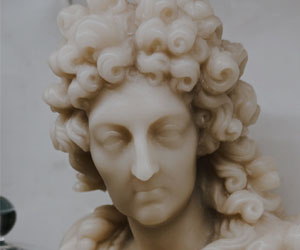 Fragrance Selection:The heart of any scented candle design is the fragrance. It sets the tone and evokes specific emotions. Whether you prefer the calming scent of lavender, the invigorating aroma of citrus, or the warmth of vanilla, the choice of fragrance is a crucial step in design. It's about more than just smell; it's about creating an ambiance that resonates with your space and your mood.
Fragrance Selection:The heart of any scented candle design is the fragrance. It sets the tone and evokes specific emotions. Whether you prefer the calming scent of lavender, the invigorating aroma of citrus, or the warmth of vanilla, the choice of fragrance is a crucial step in design. It's about more than just smell; it's about creating an ambiance that resonates with your space and your mood.
Wax And Color: The choice of wax and color is another essential aspect of design. The wax type can influence the candle's texture and burn time. Different colors can evoke different feelings. Soft pastels for a serene atmosphere, bold hues for a dramatic touch, or earthy tones for a cozy and grounded environment. The color should complement the chosen fragrance and the intended ambiance.
Container And Packaging: The vessel that holds the scented candle is more than just a practical element; it's a design statement. Containers come in a variety of shapes, sizes, and materials, from glass jars to tin cans, and even ornate ceramic pots. The packaging, including labels and boxes, can add a layer of elegance and sophistication to the overall design.
Wicks And Flames: The wick's size and type can influence how the candle burns and distributes the fragrance. Double-wicked candles can create a more intense scent release, while single wicks are ideal for a subtler ambiance. The design extends to the flame itself; many scented candles offer an aesthetic touch with wooden wicks that crackle gently as they burn.
The Power Of Scented Candle Design
Scented candle design is more than just aesthetics; it's about curating an experience. Here are some of the ways in which well-designed scented candles can elevate your space and well-being:
Aromatherapy: Scented candles are often used in aromatherapy to enhance relaxation, reduce stress, and promote better sleep. The right design can intensify these therapeutic effects.
Turning Old Into Gold
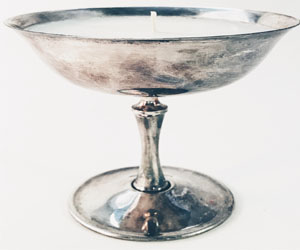 2. Gather Inspiration
2. Gather Inspiration
Before diving into a project, seek inspiration from online platforms, books, or upcycling communities. Ideas are everywhere, and seeing what others have created can fuel your creativity and help you come up with unique, sustainable designs.
3. Choose Quality Over Quantity
When selecting items for upcycling, opt for quality over quantity. Well-made, durable pieces will last longer and provide better raw materials for your projects. This approach ensures your upcycled creations have a longer life as well.
4. Declutter Responsibly
Before tossing old items, consider whether they can be upcycled. Decluttering responsibly by finding new uses for items you no longer need reduces your environmental impact and keeps useful materials out of landfills.
5. DIY Tools And Supplies
Invest in a set of basic DIY tools, like a good-quality glue gun, a sewing machine, and paintbrushes. Having the right tools will make your upcycling projects easier and more enjoyable.
6. Repaint And Refinish
A fresh coat of paint or varnish can breathe new life into many items. Consider repainting furniture or refinishing wooden surfaces to give them a modern, updated look.
A Timeless Tapestry Of Tradition And Artistry
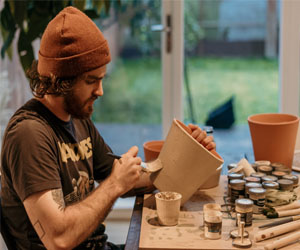 Cultural Significance: Pottery has held a profound cultural significance in the history of human civilization. In many ancient cultures, pottery was not just a craft; it was an art form deeply intertwined with rituals, spirituality, and daily life. From sacred vessels used in religious ceremonies to utilitarian items for food storage and preparation, pottery has played multifaceted roles in cultural practices.
Cultural Significance: Pottery has held a profound cultural significance in the history of human civilization. In many ancient cultures, pottery was not just a craft; it was an art form deeply intertwined with rituals, spirituality, and daily life. From sacred vessels used in religious ceremonies to utilitarian items for food storage and preparation, pottery has played multifaceted roles in cultural practices.
Global Diversity: What makes pottery culture so fascinating is its global diversity. Each culture has developed its own unique styles, techniques, and traditions in pottery. From the intricate porcelain of China and the terracotta of the ancient Greeks to the vibrant Talavera ceramics of Mexico and the earthy, rustic pottery of Native American tribes, the world of pottery is a testament to the ingenuity and creativity of humanity.
Cultural Identity: Pottery often reflects the identity and values of a culture. For example, Native American pottery features distinct geometric designs and motifs that are deeply rooted in their cultural heritage. Japanese ceramics embody the principle of wabi-sabi, celebrating imperfection and the beauty of transience. The intricate patterns of Moorish pottery found in Spain are a testament to their historical Islamic influences.
Traditional Techniques: Pottery culture involves a wide range of traditional techniques that have been passed down through generations. Techniques like coiling, handbuilding, and wheel-throwing are often specific to certain regions and time periods. The preservation of these techniques helps ensure that the art of pottery remains connected to its cultural roots.
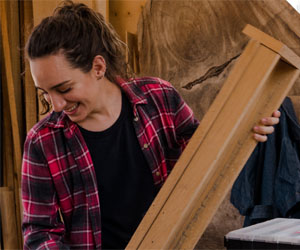 A Personal Touch: Handcrafted creations carry with them a unique, personal touch that simply cannot be replicated by machines. Each piece is a labor of love, a reflection of the artisan's skill, imagination, and passion. Whether it's a hand-carved wooden sculpture, a hand-stitched leather bag, or a hand-painted ceramic vase, the individuality of the artist is imprinted on the work, making it distinct and full of character.
A Personal Touch: Handcrafted creations carry with them a unique, personal touch that simply cannot be replicated by machines. Each piece is a labor of love, a reflection of the artisan's skill, imagination, and passion. Whether it's a hand-carved wooden sculpture, a hand-stitched leather bag, or a hand-painted ceramic vase, the individuality of the artist is imprinted on the work, making it distinct and full of character.
The Art Of Craftsmanship: Craftsmanship is at the heart of every handcrafted creation. Artisans invest time and effort honing their skills, often dedicating years to mastering their craft. This expertise shines through in the quality of their work. Every stitch, every brushstroke, every chisel mark is a testament to their commitment to perfection.
Uniqueness In Every Piece: In a world where identical, mass-produced items fill our lives, handcrafted creations stand as a beacon of uniqueness. Each piece is inherently one-of-a-kind, bearing its own imperfections, quirks, and distinctiveness. This individuality not only adds to the aesthetic value but also holds a certain sentimental charm for both the artist and the owner.
Sustainable And Ethical: Handcrafted creations are often associated with sustainability and ethical production. Artisans typically prioritize the use of natural, locally sourced materials, and the reduced carbon footprint makes these items eco-friendly. Additionally, the process of creating by hand often ensures that the production is more ethical and less exploitative compared to mass manufacturing.
Preservation Of Tradition: Many handcrafted traditions have been passed down through generations, preserving cultural heritage and age-old techniques. Artisans who create handcrafted items are often bearers of cultural traditions and the knowledge of time-honored methods. This continuity of tradition adds a profound layer of significance to each piece.
Tips For Small And Large Gardens
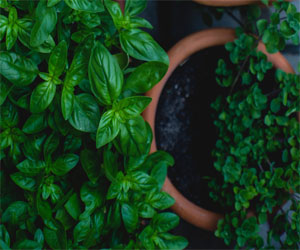 Select containers with proper drainage and consider hanging pots, window boxes, or vertical herb gardens.
Select containers with proper drainage and consider hanging pots, window boxes, or vertical herb gardens.
Group compatible herbs in a single pot or use tiered plant stands to stack multiple containers vertically.
Regularly prune and harvest your herbs to maintain their size and prevent overcrowding.
Indoor Herb Gardens
If you have limited outdoor space, an indoor herb garden can provide fresh herbs year-round. Some tips for indoor gardening include:
Place pots on windowsills or under artificial grow lights to ensure they receive adequate sunlight.
Consider using self-watering pots or hydroponic systems to make indoor herb gardening more convenient.
Be attentive to indoor humidity and ventilation to prevent issues like mildew or pests.